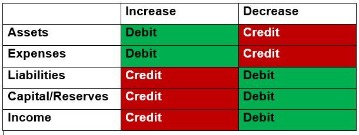
Existing transactions or documents are reviewed and it is determined whether the amount recorded in the matches equates to the amount spent by the company. This review or reconciliation method is mostly carried out using accounting software. The account reconciliation process typically takes place at the end of a financial or accounting period and these processes are generally executed on general ledgers.
Simplify Cash Reconciliation: The Future of Finance with HighRadius and Sage Integration

For instance, reconciling a general ledger requires you to obtain necessary details, such as the ending balance of the general ledger account, which is the balance as of the accounting period end date. Overall, account reconciliation plays an important role in a company’s risk management framework relating to accounting. This act mandates public companies to include an assessment of their internal controls over financial reporting with their annual report for the period. This typically involves the entry of a transaction into the general ledger in 2 separate places. In many companies, this would be a credit account and a debit account that show accounts payable.
How Account Reconciliation Works (Reconciliation Process)
In such an instance, the transaction does not appear in the bank statement until the check has been presented and accepted by the bank. QuickBooks Advanced also includes account reconciliation features, allowing you to reconcile your bank accounts with QuickBooks. NetSuite provides a real-time view of the financial data, how to enhance the audit to prevent and detect fraud enabling users to automate account reconciliations and streamline the entire process from end to end.
Another factor that seems to be unavoidable, no matter how diligent your accounting team is, is the total boycott of a transaction. Comparing accounts helps you spot transactions you have missed and keeps all your records as consistent with each other and accurate as possible. It also helps to flag any discrepancies, mistakes, or fraud in the company’s books. Any of these could have a serious detrimental impact on the financial health of a company.
- Similarly, if there are deposits appearing in the bank statement but are not in the cash book, add the entries to the cash book balance.
- Alongside human-based accounting activities, a lot of companies make use of open source accounting software to record transactions and reconcile differences between different statements or documents.
- Other reconciliations turn non-GAAP measures, such as earnings before interest, taxes, depreciation, and amortization (EBITDA), into their GAAP-approved counterparts.
- Account reconciliation software is a computerized program that automates the account reconciliation process, making it more streamlined, quicker, and easier to execute than using paper-based manual spreadsheets.
Bank reconciliation
Reconciliation in accounting—the process of comparing sets of records to check that they’re correct and in agreement—is essential for ensuring the accuracy of financial records for all kinds of businesses. For the legal profession, however, regular, effective reconciliation in accounting is key to maintaining both financial accuracy and legal compliance—especially when managing trust accounts. After finding evidence for all differences between the bank statement and the cash book, the balances in both records should be equal. You should prepare a bank reconciliation statement that explains the difference between the company’s internal records and the bank account. Reconciling an account is an accounting process that is used to ensure that the transactions in a company’s financial records are consistent with independent third party reports. Reconciliation confirms that the recorded sum leaving an account corresponds to the amount that’s been spent and that the two accounts are balanced at the end of the reporting period.
For the first job, ABC credits $500 in revenue and debits the same amount for accounts receivable. Once data is gathered from these sources, the software, through advanced encoding, then compares account balances between documents from the different sources and identifies discrepancies. These are then investigated by accounting staff to identify the main cause of the discrepancies. Go through all transactions entered into internal records and compare them against similar transactions appearing in the bank statement. Check off transactions that are in agreement, and make a list of transactions in the bank statement that are not supported by any evidence, such as a payment receipt.
What is the reconciliation process?
For small what changes in working capital impact cash flow businesses, the main goal of reconciling your bank statement is to ensure that the recorded balance of your business and the recorded balance of the bank match up. Reconciliation in accounting is not only important for businesses, but may also be convenient for households and individuals. It is prudent to reconcile credit card accounts and checkbooks on a regular basis, for example. This is done by comparing debit card receipts or check copies with a person’s bank statements. While comparing documents, check to see that all outgoing transactions are reflected in both the internal record and the bank account statement.
So, businesses should perform regular check-ups because these can contribute to their success. You would need to justify, explain, or correct any differences or discrepancies. When there are currency translation adjustments no unexplained differences, an accountant is able to sign off the process.